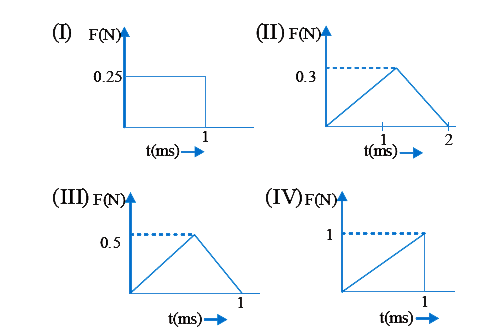Cell fractionation involves
I. homogenisation of cell constituents.
II. Subjecting the homogenate to centrifugal force.
III. Detection of slight variation of amino acids.
IV. Staining of structures of living cells.
Only II
I and II
III and IV
II and IV
The correct Answer is:B
Step by step video, text & image solution for Cell fractionation involves I. homogenisation of cell constituents. II. Subjecting the homogenate to centrifugal force. III. Detection of slight variation of amino acids. IV. Staining of structures of living cells. by Biology experts to help you in doubts & scoring excellent marks in Class 12 exams.
Updated on:21/07/2023Topper's Solved these Questions
- CELL: THE UNIT OF LIFEBook:ARIHANT NEETChapter:CELL: THE UNIT OF LIFEExercise:Chapter Exercises B Medical entrances special format questions (Match the column)
Explore 4 Videos
- CELL: THE UNIT OF LIFEBook:ARIHANT NEETChapter:CELL: THE UNIT OF LIFEExercise:Chapter Exercises B Medical entrances special format questions (Assertion and Reason )
Explore 8 Videos
- CELL: THE UNIT OF LIFEBook:ARIHANT NEETChapter:CELL: THE UNIT OF LIFEExercise:Chapter Exercises A Taking it together (Assorted Questions of the Chapter for Advanced Level Practise )
Explore 135 Videos
- CELL CYCLE AND CELL DIVISIONBook:ARIHANT NEETChapter:CELL CYCLE AND CELL DIVISIONExercise:Chapter Exercises (C) Medical entrances gallery (collection of questions asked in NEET & Various medical entrance exams)
Explore 63 Videos
- CHEMICAL COORDINATION AND INTEGRATIONBook:ARIHANT NEETChapter:CHEMICAL COORDINATION AND INTEGRATIONExercise:MEDICAL ENTRANCES S GALLERY
Explore 100 Videos
Similar Questions
Knowledge Check
If the cells are broken up an sedimented the new structrue formed in one of the fraction is
AlysosomesBmicrosomesCcentrosomesDperoxisomesWhich of the following statements correctly defines growth?
I. Increase in size of cells.
II. Increase in the number of cells.
III. Increase in the amount of apoplasmatic structures.
IV. Decrease in amount of living material.AOnly IBI and IICI, II and IIIDAll of theseIf cells are broken up and spum in a centrifuge , the new structure formed in one of the fractions is
AlysosomeBmicrosomeCribosomeDcentrosome
Consider the following statements and mark as True(T)/False(F).
I. Transformation requires bacterial cell to the competent.
II. Cell-to-Cell contact is required in conjugation.
III. Transduction is carried out by bacteriophages.
IV. High frequency recombinant is formed if F-factor is delivered from donor to the recepient cell completely.
View SolutionChromatography technique has proved useful for the isolation and detection of
(i) amino acids
(ii) sugars
(iii) plant pigments
(iv) nonvolatile liquids
View SolutionThe chromosomes which do not take part in cell division are
I. L-chromosome
II. Acentric
III. Polycentric
IV. Dicentric
View SolutionRead the given statements.
(i) Outer exine is made up of sporopollenin.
(ii) Inner intine is pecto-cellulosic in nature
(iii) Generative cell is bigger and contains abundant food reserve
(iv) Vegetative cell is small and floats in the cytoplasm of the generative cell.
Which of the given statements are not true regarding structure of pollen grain?
View SolutionRead the following statements and select the correct option w.r.t cell theory.
(i) All living organisms are composed of cells and products of cells.
(ii) Viruses are exception to cell theory because they are cellular particles.
(iii) All cells arise from pre-existing cells.
(iv) Activities of an organisms are the outcome of sum total of activities and interactions of its constituent cells.
(v) Rudolf Virchow gave final shape to cell theory.
View Solution


